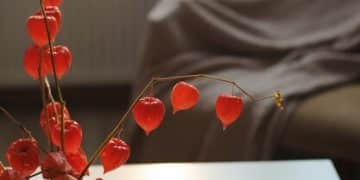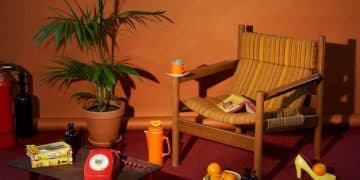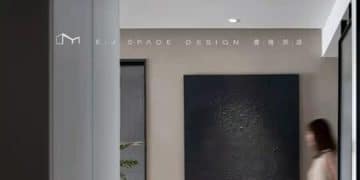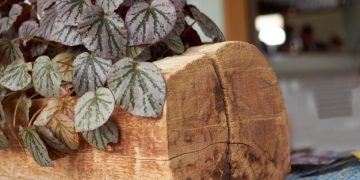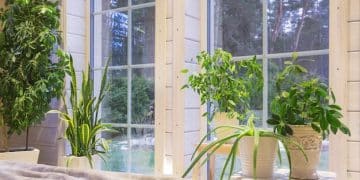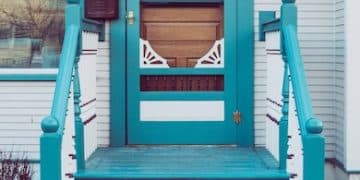4 Interior Design Trends That Will Dominate 2025
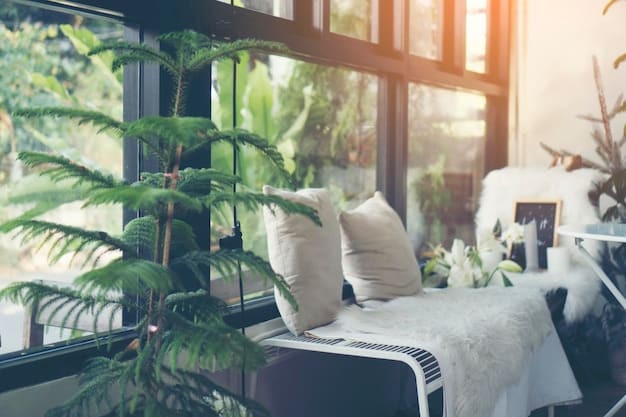
As we look to 2025, four interior design trends are set to remain prominent: biophilic design, emphasizing nature and sustainability, comfortable minimalism that combines aesthetic appeal with functionality, tech-integrated smart homes, and bold maximalism celebrating individuality and vibrant colors.
Get ready to revamp your living spaces with the top 4 Interior Design Trends That Are Here to Stay in 2025. These styles blend function with flair, ensuring your home is not just current, but timelessly chic.
Embracing Nature: The Enduring Appeal of Biophilic Design
Biophilic design continues to gain momentum, driven by a deeper understanding of how our environments affect our well-being. In 2025, this trend will be more refined, focusing on creating spaces that foster a genuine connection with nature.
By integrating natural elements, such as plants, natural light, and organic materials, biophilic design enhances both the aesthetic and the psychological aspects of interior spaces. It’s about creating a harmonious balance between the indoors and the outdoors.
Key Elements of Biophilic Design
Implementing biophilic design effectively involves considering several key elements that work together to create a natural and calming environment:
- Natural Light Optimization: Maximize the use of natural light through large windows and skylights to reduce reliance on artificial lighting.
- Indoor Plants: Incorporate a variety of indoor plants to improve air quality and add greenery to your space.
- Natural Materials: Use materials such as wood, bamboo, and stone to bring the textures and colors of nature indoors.
- Water Features: Add small water features like fountains or aquariums to introduce the soothing sound and visual appeal of water.
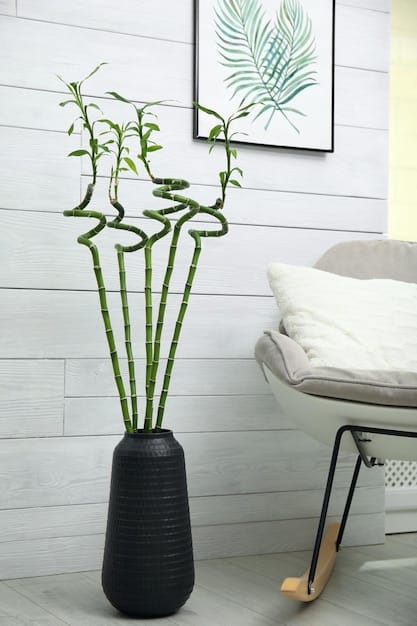
Biophilic design is not just about decoration; it’s a holistic approach to interior design that considers the health and well-being of the occupants. This trend is here to stay in 2025 as people continue to prioritize creating spaces that nurture and inspire.
Comfortable Minimalism: Blending Aesthetics with Functionality
Comfortable minimalism is evolving, moving beyond stark, cold aesthetics to embrace warmth and practicality. This approach focuses on decluttering and simplifying spaces while ensuring they remain inviting and functional.
It’s about striking a balance between visual appeal and daily usability, creating interiors that are as livable as they are beautiful. This trend emphasizes quality over quantity, selecting pieces that are both stylish and comfortable.
Achieving Comfortable Minimalism
To achieve comfortable minimalism, consider the following strategies:
Focus on Neutral Palettes: Use soft, neutral colors like creams, grays, and light browns to create a calming backdrop.
Choose Quality Materials: Invest in durable, high-quality furniture and décor that will last for years.
Incorporate Soft Textures: Add plush rugs, soft blankets, and comfortable cushions to enhance the cozy feel of your space.
Maximize Storage: Utilize smart storage solutions to keep clutter at bay and maintain a clean, organized environment.
Comfortable minimalism is about creating a space that is both aesthetically pleasing and functionally efficient. It’s a sustainable approach to design that prioritizes long-term comfort and simplicity, making it a lasting trend in 2025.
Smart Homes: Seamless Tech Integration
The integration of smart technology into home design is no longer a futuristic concept but an integral part of modern living. In 2025, smart homes will become even more sophisticated, seamlessly blending technology with interior aesthetics.
This trend is about enhancing convenience, efficiency, and security through automated systems and smart devices. From smart lighting and climate control to advanced security systems, technology is transforming how we interact with our homes.
Key Smart Home Features
Several key features define the smart home trend:
- Automated Lighting: Smart lighting systems can be programmed to adjust based on time of day, occupancy, or mood, enhancing energy efficiency and creating the perfect ambiance.
- Smart Climate Control: Smart thermostats learn your preferences and adjust the temperature automatically, optimizing energy consumption and ensuring comfort.
- Integrated Security Systems: Advanced security systems with smart locks, surveillance cameras, and motion sensors provide enhanced protection and peace of mind.
- Voice-Controlled Assistants: Voice assistants like Amazon Alexa and Google Assistant allow you to control various aspects of your home with simple voice commands.
As technology advances, smart homes will continue to evolve, becoming more intuitive and integrated into our daily lives. This trend is set to stay in 2025 as homeowners seek to enhance their comfort, convenience, and security through smart solutions.

Bold Maximalism: Celebrating Individuality and Vibrant Colors
In contrast to minimalism, bold maximalism embraces excess, encouraging homeowners to express their unique personalities through vibrant colors, eclectic patterns, and an abundance of décor. This trend is about creating spaces that are rich in character and visually stimulating.
Maximalism is not about chaos but rather about curating a collection of items that reflect your personal style and interests. It’s an opportunity to showcase your individuality and create a space that is truly your own.
Embracing Maximalist Design
Here’s how to embrace maximalist design:
Mix and Match Patterns: Combine different patterns and textures to create a visually dynamic space.
Use Bold Colors: Don’t be afraid to use bright, saturated colors on walls, furniture, and accessories.
Display Personal Collections: Showcase your favorite collections, whether it’s art, books, or decorative objects.
Layer Accessories: Add multiple layers of accessories such as pillows, throws, and rugs to create a cozy and inviting atmosphere.
Bold maximalism is a celebration of individuality and self-expression. It’s a trend that empowers homeowners to create spaces that are as unique and vibrant as they are, ensuring its continued popularity in 2025.
Sustainable Materials: Eco-Friendly Choices for a Better Future
Sustainable materials are increasingly becoming a key consideration in interior design. This trend reflects a growing awareness of the environmental impact of our choices and a desire to create homes that are both beautiful and eco-friendly.
Using sustainable materials not only reduces your carbon footprint but also promotes a healthier living environment. These materials are often non-toxic, durable, and aesthetically pleasing, making them a perfect choice for forward-thinking homeowners.
Key Sustainable Materials
To incorporate sustainable materials into your interior design:
- Bamboo: A fast-growing, renewable resource that is perfect for flooring, furniture, and decorative accents.
- Reclaimed Wood: Salvaged wood from old buildings and furniture adds character and reduces the demand for new timber.
- Recycled Glass: Used in countertops, tiles, and decorative items, recycled glass is a beautiful and sustainable option.
- Organic Cotton: Choose organic cotton for bedding, curtains, and upholstery to reduce exposure to harmful chemicals.
Sustainable materials are not only eco-friendly but also add a unique touch to your interiors. This trend is expected to remain significant in 2025 as more people recognize the importance of making environmentally responsible choices in home design.
Multifunctional Spaces: Maximizing Versatility
With the increasing need for flexibility in our homes, multifunctional spaces are becoming essential. This trend focuses on designing rooms that can serve multiple purposes, maximizing the utility of every square foot.
Whether it’s a living room that doubles as a home office or a bedroom that incorporates a workout area, multifunctional spaces are designed to adapt to your changing needs. This approach is particularly valuable in urban environments where space is often limited.
Designing Multifunctional Spaces
To create effective multifunctional spaces:
Use Flexible Furniture: Choose furniture that can be easily moved or reconfigured, such as modular sofas and folding tables.
Incorporate Storage Solutions: Utilize built-in storage and hidden compartments to keep clutter at bay and maintain an organized space.
Create Zones: Define different zones within the room using rugs, screens, or changes in flooring to delineate specific areas for work, relaxation, or exercise.
Utilize Vertical Space: Take advantage of vertical space with shelving units and wall-mounted storage to maximize storage without taking up valuable floor space.
Multifunctional spaces are not only practical but also enhance the overall flow and functionality of your home. This trend is set to remain popular in 2025 as homeowners seek to make the most of their living spaces, adapting them to their evolving lifestyles.
| Key Trend | Brief Description |
|---|---|
| 🌿 Biophilic Design | Integrates nature into interiors for well-being and beauty. |
| 🛋️ Comfortable Minimalism | Blends simplicity with comfort for functional and stylish spaces. |
| 💡 Smart Homes | Integrates technology for convenience, efficiency, and security. |
| 🎨 Bold Maximalism | Celebrates individuality with vibrant colors and eclectic décor. |
Frequently Asked Questions (FAQ)
▼
Biophilic design incorporates natural elements like plants, light, and organic materials to create spaces that connect us with nature, enhancing well-being and reducing stress.
▼
Focus on neutral color palettes, quality materials, and soft textures. Maximize storage to keep clutter at bay, ensuring a calming and functional environment.
▼
Key features include automated lighting, smart climate control, integrated security systems, and voice-controlled assistants that enhance convenience and efficiency.
▼
Mix and match patterns, use bold colors, display personal collections, and layer accessories. Don’t be afraid to showcase your unique style and fill your space with personality.
▼
Sustainable materials reduce environmental impact, promote healthier living, and add unique touches to interiors. They are often non-toxic and durable, contributing to a better future.
Conclusion
As we approach 2025, these four interior design trends—biophilic design, comfortable minimalism, smart homes, bold maximalism, sustainable materials and multifunctional spaces—are set to redefine our living spaces. By embracing these trends, you can create homes that are not only aesthetically pleasing but also functional, sustainable, and tailored to your unique lifestyle, enhancing your overall quality of life.
